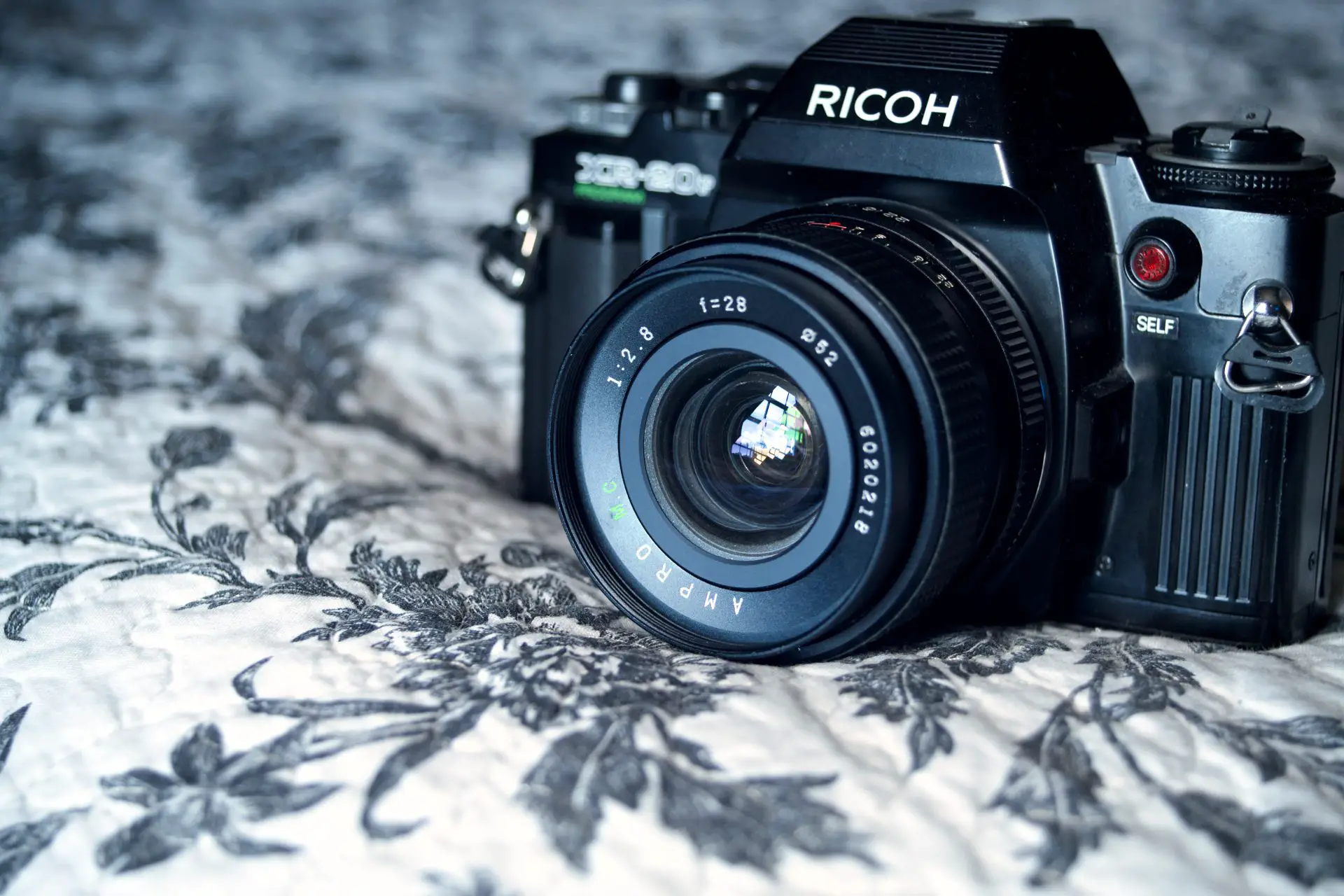I am a man with many interests and hobbies. Beyond just collecting and using cameras I also like to repair them. Sometimes even successfully.
I acquired a Ricoh ZR-20sp for repair. I am still amidst researching and finding the time to take it apart and fix its ailments. With this purchase came with an excellent Rikenon 50mm f/2. Affectionally hailed as the Cheap Man’s Summicron. We will see about testing that one day… Also with it came a curious off-brand wide-angle prime. I was excited as I lack wide-angle primes as a whole. And the 28mm focal length is one often marked as a great over-all companion especially by street photographers. This focal length would also work as a great ‘normal’ field of view on my Pentax K-7.
The lens generally feels solid but its manufacture is not of the highest quality. The aperture ring has click-stops but they aren’t very deep leaving the ring a bit too easy to turn. The focus ring by contrast is very stiff. Perhaps it needs to be cleaned and re-greased. No where on the lens does it state where it was made and my research has yet to determine who actually made this lens, so it’s a bit of a mystery.
So what do I do next? I put it on my SL to see what it does… and… wow…


Wide open at 2.8, the Ampro MC 28mm f/2.8 is by far the softest lens I have ever used. This includes vintage camera optics such as the Graftar 85mm on the Graflex 22 TLR and the simple Kodex No. 0 on a No.1 Autographic Kodak Jr. Those lenses can produce great results when used in the right situations. This lens is IMPOSSIBLE to focus because it is so soft. It lacks any representation of micro-contrast at this aperture. Even focus peaking will not help at all. The lens has to be stopped down to f/5.6 to be able to focus with any accuracy.
As for sharp results? Well the Ampro MC 28mm f/2.8 is not a sharp lens. Stopping down to f/8 or f/11 can yield very usable results but it is nowhere as near as sharp as other lenses at the same apertures. It lacks micro-contrast in details giving a fairly flat rendering of the subject in my opinion. In use, this lens reminds me of using a disposable camera. Remember the plastic bricks with often plastic lenses and fixed apertures? Use this lens as such and it could be a day-light snapshot lens. Still, all things considered I can just use a different, and better, lens.
Below are some quick images showing the performance of this lens wide-open and stopped starting with an aperture ramp series for you to judge the performance for yourself.







I find the rendering an bokeh to be nervous. Wide open leaves the subject as a glowing blob with the background as a jittery almost holographic blend of color. Kind of makes me a nauseous to look at for too long.




If I have to say a positive point about the Ampro MC 28mm f/2.8 then it has to be the color. It does provide a satisfying saturation to color without any odd color shifts. It also seems to be fairly resistant to color fringing from what I can tell. A shame that the general sharpness performance is so poor. Perhaps this is just my copy? Maybe I should try placing my eye glasses in front of the lens? Is this one of the worst lenses? Let me know what you think…
Share this post:









Comments
Geoff Chaplin on Ampro MC 28mm f/2.8 – A Few Frames with the Worst Lens Ever?
Comment posted: 22/06/2023
Comment posted: 22/06/2023
Bob Janes on Ampro MC 28mm f/2.8 – A Few Frames with the Worst Lens Ever?
Comment posted: 22/06/2023
Looks like the sort of lens that might have been turned out for lots of different re-branders, quite possibly with differing levels of quality assurance applied to the production line...
Comment posted: 22/06/2023
Comment posted: 22/06/2023
Comment posted: 22/06/2023
Murray on Ampro MC 28mm f/2.8 – A Few Frames with the Worst Lens Ever?
Comment posted: 22/06/2023
Later, a wide range of products with the Ampro name can be found online, but who knows if it was the same company. Inexpensive tripods & camera bags might have been branded for them. I have seen AmPro single board computers that predate PC's, from the C/PM and ZCPR3 operating system era.
Later there were Ampro projection lenses with other brand names like Wollensak & Simpson, including military contract optics. Many US companies had optics made for them by one of the many in Rochester with glass foundries & expertise. That was a norm and not a sign of cheap outsourcing that trended much later.
The discontinued Ampro Alice series of DLP projectors are listed on the projectorcentral website at prices up to US$60000.
For SLR's, I would take a wild guess that they were being made in Japan or later in S. Korea like so many other brands that were separate from the mainstream.
I agree with the other commenter there is probably something unhealthy in your lens.
I used to buy a lot of optics and cameras from a tech recycling store that receives donations and found an overwhelming proportion had been 'violated' by a previous donor/owner. Eventually I stopped rolling the dice with them. Damaged screw heads, missing parts, and so on. Some were overpriced, inspired by highest eBay prices. Prices were sometimes reduced in steps and then sent away for material reclamation.
I found more than one item with reversed elements and lenses with internal parts rattling around.
Comment posted: 22/06/2023
Murray on Ampro MC 28mm f/2.8 – A Few Frames with the Worst Lens Ever?
Comment posted: 22/06/2023
David Hill on Ampro MC 28mm f/2.8 – A Few Frames with the Worst Lens Ever?
Comment posted: 22/06/2023
Comment posted: 22/06/2023
Lee on Ampro MC 28mm f/2.8 – A Few Frames with the Worst Lens Ever?
Comment posted: 27/06/2023
https://www.youtube.com/watch?v=WWR-3ASnbmQ